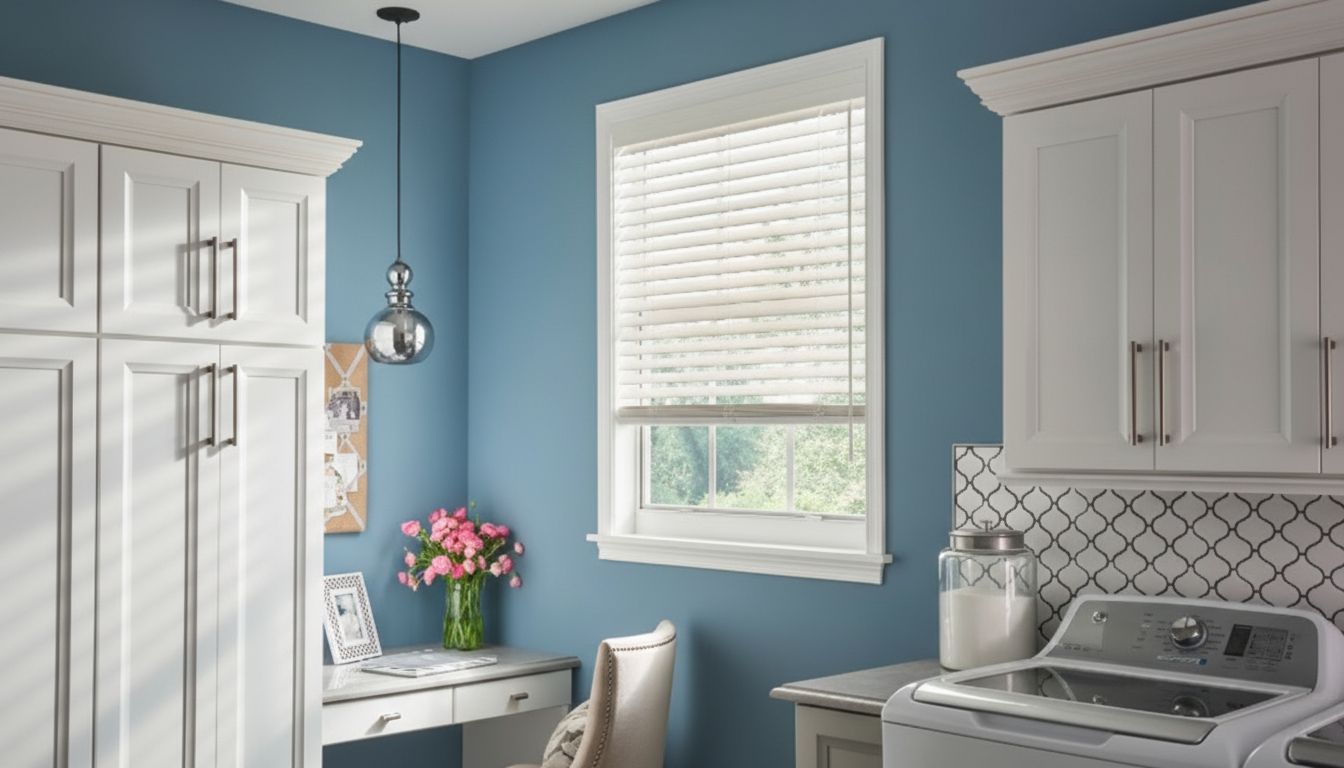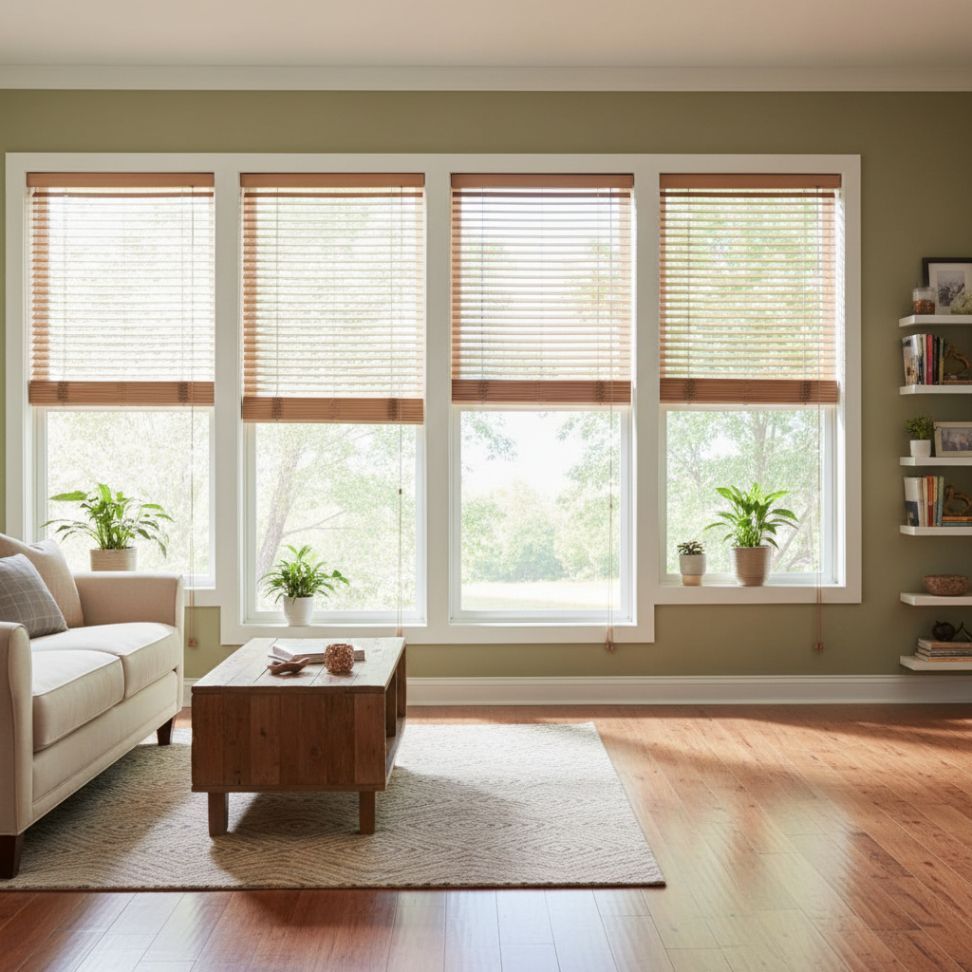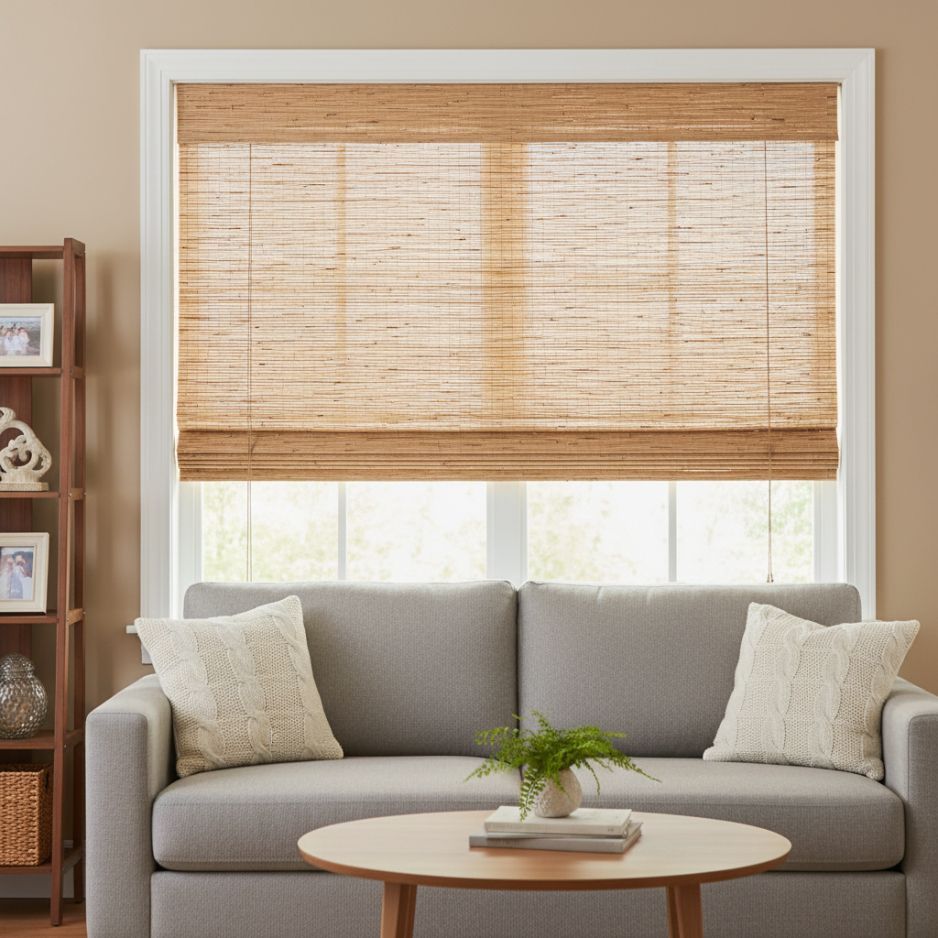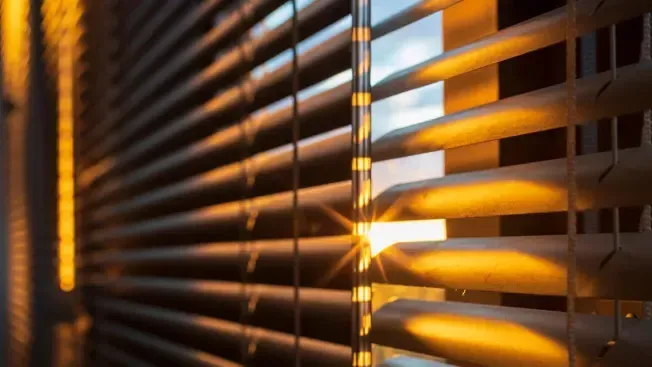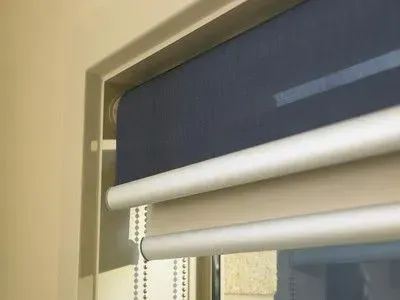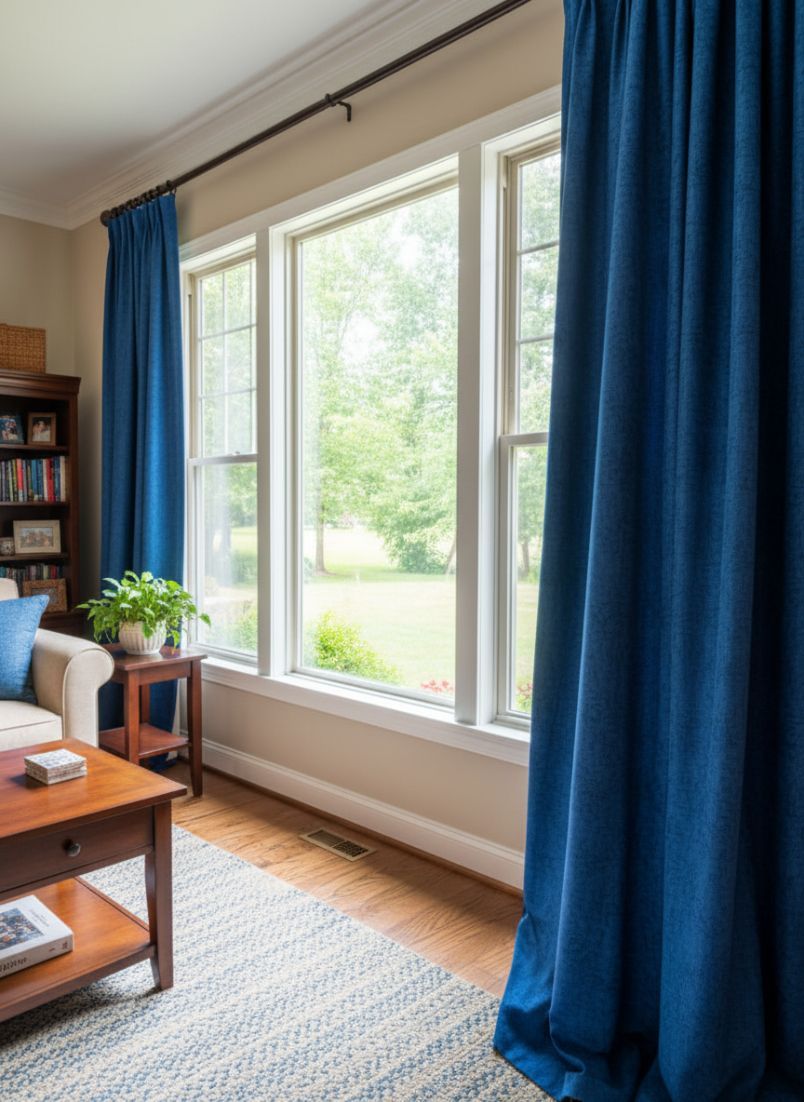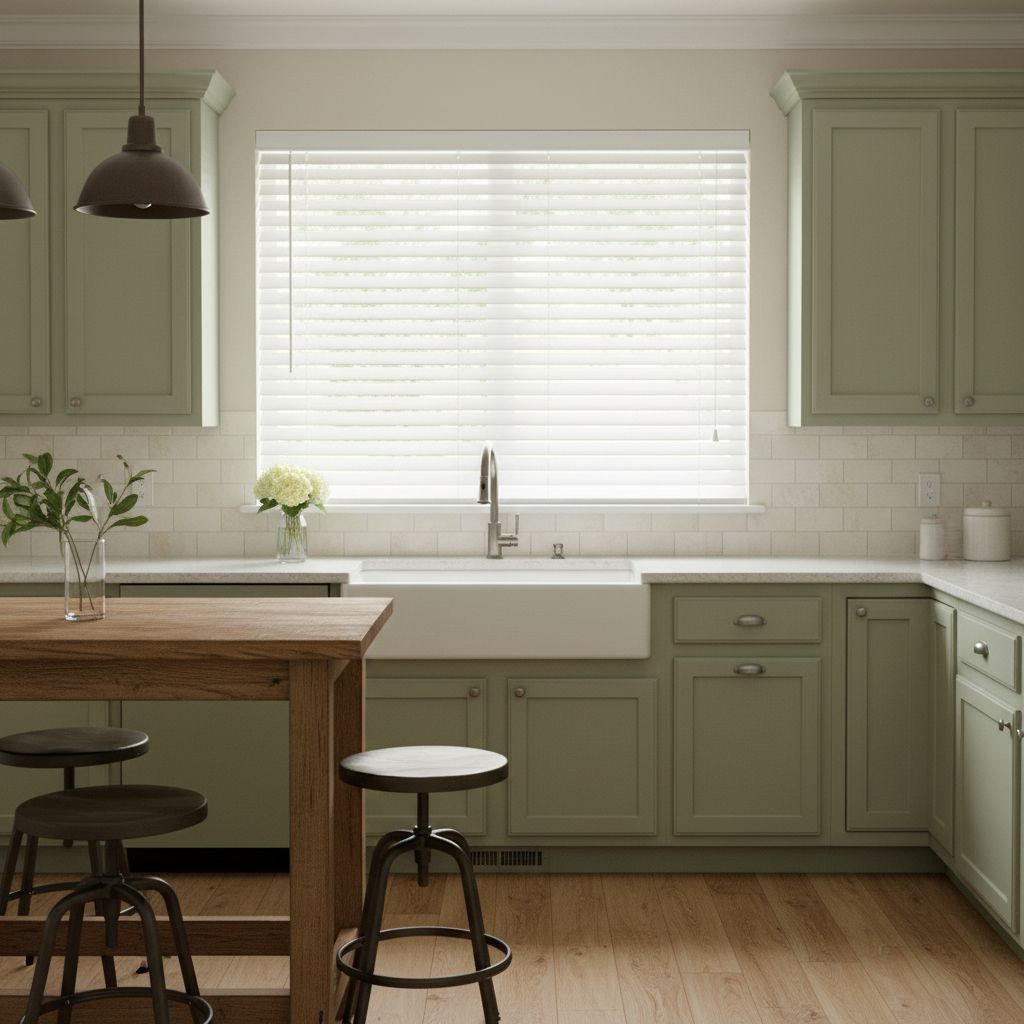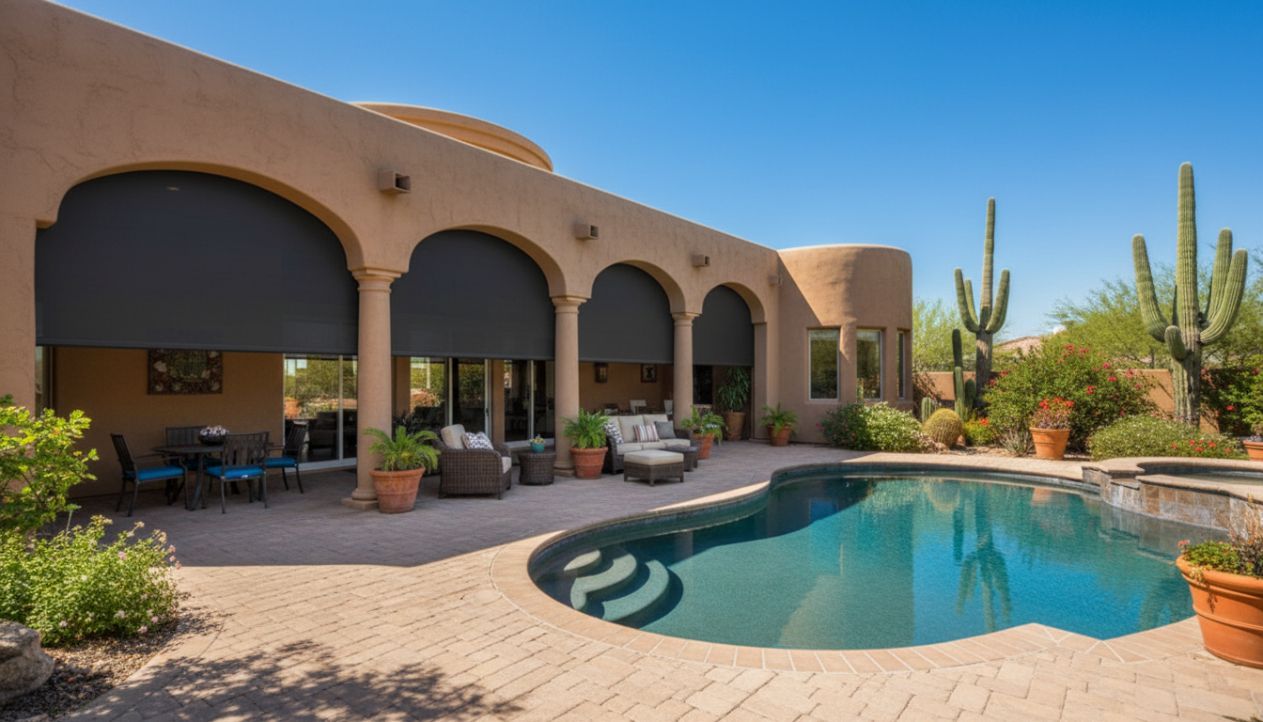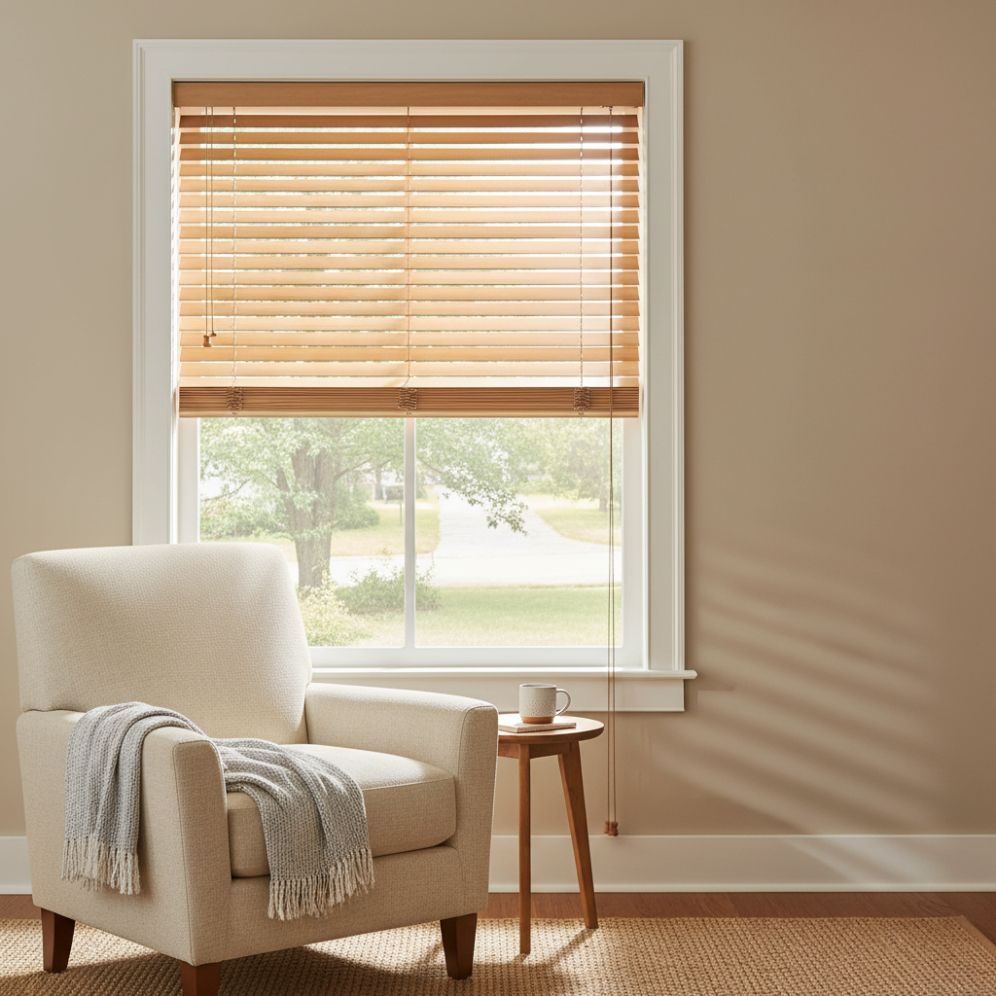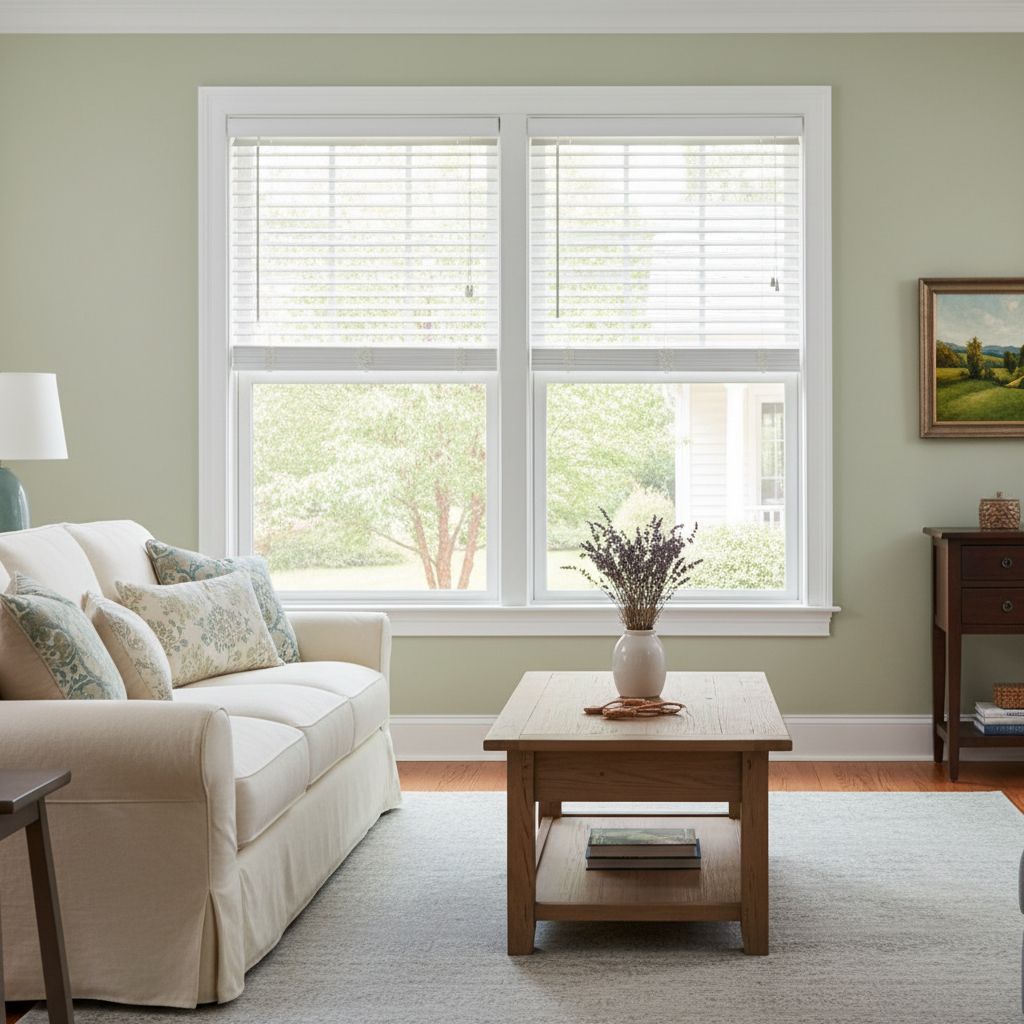What Can I Put on My Windows to Keep a Room Cool?
TLDR;
To keep a room cool, apply reflective window films, install thermal curtains, or use insulated cellular shades to block heat. Exterior shading solutions like awnings and shutters can further reduce heat absorption. Proper window insulation and strategic coverings significantly reduce indoor temperatures and cooling costs.
Windows are one of the primary sources of heat gain in a home, allowing sunlight to enter and raise indoor temperatures. This can make rooms uncomfortably warm, especially during the summer months. Fortunately, there are various window treatments and solutions that can effectively block heat, insulate your space, and keep your room cooler.
At Love Is Blinds AZ, we specialize in providing high-quality window coverings that enhance comfort and energy efficiency. In this guide, we’ll explore the best solutions for keeping your room cool, from advanced heat-blocking window films to practical DIY insulation techniques.
Understanding How Windows Transfer Heat
How Heat Enters Through Windows
Heat enters your home through windows in three main ways:
- Conduction: Heat moves directly through the glass and window frame.
- Convection: Warm air circulates near the window, increasing indoor temperatures.
- Radiation: Sunlight passes through the glass, warming up the room.
Factors Affecting Heat Gain Through Windows
Several factors influence how much heat enters your home:
- Window Orientation: East- and west-facing windows receive the most intense sunlight.
- Glass Type: Single-pane windows allow more heat transfer than double-pane or Low-E glass.
- Existing Window Coverings: Thin curtains and standard blinds provide minimal insulation against heat.
Best Window Treatments to Keep Your Room Cool
1. Reflective Window Films
How They Work: These films reflect UV rays and infrared heat, reducing indoor temperatures by blocking solar radiation before it enters.
Best Types:
- Silver reflective film: High heat rejection but may reduce visibility.
- Ceramic-based film: Blocks heat without affecting natural light.
- Tinted films: Reduce glare while maintaining a stylish look.
Installation Guide:
- Clean the window surface.
- Cut the film to size.
- Spray soapy water on the glass.
- Apply the film and smooth out bubbles.
- Trim excess edges.
2. Insulated Cellular Shades
Why They Work: These shades trap air in honeycomb-shaped pockets, providing insulation against heat.
Benefits:
- Reduces heat gain by up to 60%
- Provides privacy and light control
- Energy-efficient and cost-effective
3. Thermal & Blackout Curtains
What Makes Them Effective? Thick layers of fabric trap heat and block sunlight, preventing warmth from entering.
Material Comparison:
- Polyester: Budget-friendly and durable
- Wool: Heavy-duty insulation
- Blackout-coated fabric: Best for total light and heat blocking
4. External Window Coverings (Awnings & Shutters)
How Exterior Shading Works Blocking sunlight before it reaches the window is one of the most effective ways to reduce heat gain.
Best Options:
- Retractable Awnings: Provide shade when needed
- Fixed Awnings: Permanent solution for high sun exposure areas
- Shutters: Effective for insulation and security
- Solar Screens: Blocks UV rays while allowing ventilation
DIY Solutions for Budget-Friendly Cooling
1. Bubble Wrap Window Insulation
- Simple and effective DIY method
- Traps air bubbles against the glass, reducing heat transfer
Step-by-Step Guide:
- Cut bubble wrap to match window size.
- Spray water on the window.
- Press the bubble wrap onto the glass and smooth it out.
2. Aluminum Foil & Cardboard Hack
- Reflects sunlight away from windows
- Inexpensive but can reduce natural light
3. Magnetic Window Insulation
- Uses magnetic strips for easy removal
- Ideal for renters needing a temporary solution
Comparative Analysis: Which Window Covering Works Best?
Heat Reduction vs. Aesthetic Appeal
Understanding how different window treatments compare in insulation performance can help you make the best choice for your space. If you're debating between blinds and curtains, check out our Roller Blinds vs. Curtains Insulation guide to see which option offers better temperature control.
Cost Comparison
- Low-cost solutions: DIY insulation, aluminum foil, bubble wrap
- Mid-range options: Thermal curtains, blackout blinds
- Premium choices: High-quality cellular shades, motorized shutters
Real-Life Case Studies & User Experiences
Urban Apartment
A city dweller installed solar window film and blackout curtains, reducing indoor temperatures by up to 10°F.
Suburban Home
A homeowner combined cellular shades and exterior awnings, cutting cooling costs by 25%.
Off-Grid Cabin
A DIY enthusiast used
bubble wrap insulation and external shading, maintaining a cooler indoor environment without electricity.
Environmental & Health Benefits
Eco-Friendly Window Treatments
Sustainable materials like bamboo shades and recycled fabric blinds reduce environmental impact while maintaining energy efficiency.
UV Protection & Health Benefits
Blocking UV rays helps:
- Prevent furniture fading
- Reduce eye strain and glare
- Protect skin from harmful radiation
Conclusion
Keeping your room cool starts with choosing the right window treatment. Whether you opt for heat-blocking window film, insulated shades, or exterior shutters, the key is selecting a solution that fits your needs and budget.
At Love Is Blinds AZ, we offer expert guidance and a wide range of cooling window treatments to help you stay comfortable year-round. Explore our selection today and find the perfect solution to beat the heat!

